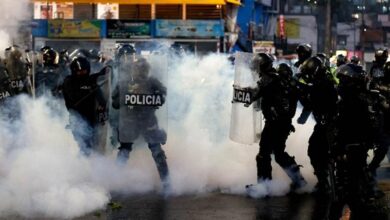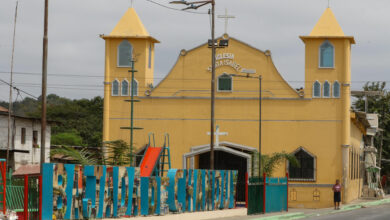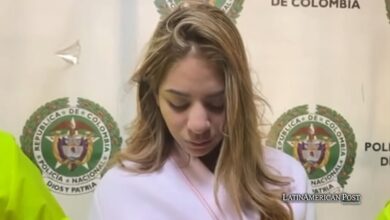Ecuador’s ‘Living Forest’ Initiative: A Revolutionary Approach to Climate Action

In Ecuador’s Amazon rainforest, the Sarayaku Indigenous community’s ‘Kawsak Sacha’ or ‘Living Forest’ initiative redefines conservation. Scientists from across the globe gathered to explore this groundbreaking model, offering new solutions to the global climate crisis.
Embracing Indigenous Wisdom in Modern Conservation
Deep within the Ecuadorian Amazon, an inspiring movement is attracting global attention. ‘Kawsak Sacha,’ meaning ‘Living Forest’ in Kichwa, is a bold initiative by the Sarayaku Indigenous community. Unlike traditional conservation efforts, which often isolate specific species or ecosystems, this approach sees the forest as a vast, interconnected web of life. Every being—whether visible, such as animals and plants, or invisible, like spirits or microorganisms—plays an essential role in maintaining the ecosystem’s balance.
The Sarayaku believe that all forest elements are part of a living entity that must be respected and protected. This worldview contrasts with the often compartmentalized Western scientific approach to conservation, which focuses on protecting individual species or habitats without considering their relationship to the broader ecosystem. For the Sarayaku, there is no separation between the natural world and the spiritual realm, and intricate networks connect all beings.
This year, a team of over 50 scientists, lawyers, artists, and journalists from 12 countries, including Argentina, Brazil, the United States, and Japan, journeyed to Sarayaku to learn from the community and its philosophy of the ‘Living Forest.’ The goal was to deepen their understanding of this complex ecosystem and explore how Indigenous knowledge could inform and improve global efforts to combat climate change.
Carlos Andrés Baquero, director of research for the Terra Program at New York University, called ‘Kawsak Sacha’ “the most advanced initiative” in understanding how all beings in the Amazon are interrelated. He noted that while traditional Western science often focuses on single species or isolated ecosystems, Sarayaku’s approach offers a more holistic view of nature. Baquero described it as “a new way of thinking about the environment” that could be transformative for global conservation efforts.
The Science of the ‘Living Forest’
At the heart of the Sarayaku’s vision is the belief that the forest is a living, breathing entity, with every element, from the tallest trees to the smallest fungi, playing a vital role in its survival. One of the critical scientific revelations during the expedition to Sarayaku was the discovery of the intricate network of fungi that thrive beneath the forest floor. These tiny organisms form vast underground networks, allowing plants and trees to communicate and share nutrients, creating a living web that sustains the entire ecosystem.
Western science has only recently begun to understand the importance of these fungal networks, known as mycorrhizal networks, which are essential for forest health. In Sarayaku, however, these networks have long been recognized as part of the forest’s living spirit. The Sarayaku’s understanding of the forest goes far beyond the visible, encompassing the relationships between all living things—seen and unseen.
“The Sarayaku’s worldview offers us a new way of looking at nature,” Baquero explained. “It forces us to move beyond the idea of protecting a single species or a specific area of land and to start thinking about conservation in a much broader, more interconnected way. Every tree, every plant, every animal, and even the fungi beneath our feet are part of a larger system that we need to protect.”
Inspired by the Sarayaku’s holistic understanding of the Amazon, the scientific community is now looking at new ways to map and study these “invisible networks.” Researchers hope to develop innovative strategies for preserving the world’s most vulnerable ecosystems by combining Indigenous knowledge with modern technology.
Protecting the Amazon, Protecting the World
The Sarayaku’s vision of the ‘Living Forest’ has come at a critical time. The Amazon rainforest, often called the “lungs of the Earth,” is crucial in regulating the global climate. However, deforestation, industrial activities, and climate change threaten its survival. In recent years, there has been a sharp increase in wildfires, droughts, and deforestation, all of which have devastated large forest areas.
The Amazon’s deterioration has dire implications for the entire planet. As the rainforest shrinks, its ability to absorb carbon dioxide diminishes, exacerbating the effects of global warming. Protecting the Amazon is not just an environmental issue but an international priority. If we fail to protect this vital ecosystem, the consequences will be felt worldwide.
The Sarayaku’s ‘Kawsak Sacha’ initiative offers a powerful solution. By viewing the forest as a living being that must be respected and cared for, the Sarayaku are setting an example for the world. Their approach emphasizes the need for long-term sustainability and the importance of maintaining the delicate balance of ecosystems.
In 2012, the Inter-American Court of Human Rights ruled favor of the Sarayaku in a landmark case against the Ecuadorian government. The court ordered the government to remove explosives placed in Sarayaku territory by an oil company and consult the community before any future projects could proceed. This ruling was a significant victory for Indigenous rights and environmental protection, but the Sarayaku continue to fight for the full implementation of the court’s decision.
For the Sarayaku, the fight to protect the Amazon is not just about defending their territory but also safeguarding the planet’s future. “The Amazon is the heart of the Earth,” said one Sarayaku leader. “If the heart stops beating, the whole world will suffer.”
A Global Call for Action
As the climate crisis worsens, there is growing recognition that Indigenous knowledge is essential to addressing the world’s most pressing environmental challenges. Indigenous communities like the Sarayaku have been stewards of their lands for millennia, and their understanding of the natural world is invaluable. However, their voices are often marginalized in global climate change and conservation discussions.
The recent expedition to Sarayaku was a step toward changing that. The event highlighted the importance of collaboration between Western science and Indigenous knowledge by bringing together scientists, academics, and Indigenous leaders. It also demonstrated that Indigenous-led conservation efforts, like ‘Kawsak Sacha,’ offer some of the most effective solutions to the climate crisis.
At the upcoming Climate Week in New York, representatives from Sarayaku will share their experiences and knowledge with the global community. This event, hosted by New York University’s MOTH project, will provide a platform for discussing Sarayaku’s vision of the ‘Living Forest’ and how it can inform global conservation efforts.
For Baquero and other scientists involved in the expedition, the lessons learned in Sarayaku have the potential to reshape the way the world approaches conservation. “The Sarayaku are showing us that we need to think about nature in a different way,” Baquero said. “We can’t just focus on individual species or isolated ecosystems. We need to understand that everything is connected, and we need to protect those connections if we want to save the planet.”
A Partnership Between Science and Tradition
As global temperatures rise and ecosystems around the world are pushed to the brink, the Sarayaku’s ‘Living Forest’ initiative offers a beacon of hope. Their approach to conservation, rooted in a deep respect for the interconnectedness of all life, has the potential to inspire a new era of environmental stewardship.
The recent gathering of scientists, researchers, and Indigenous leaders in Sarayaku was just the beginning. In the coming years, there will be continued collaboration between Western scientists and Indigenous communities, with the goal of developing innovative solutions to the climate crisis.
Already, new research projects are being planned, including studies on animal communication, plant intelligence, and the mapping of invisible networks within ecosystems. These projects will combine cutting-edge scientific techniques with Indigenous knowledge, offering a more holistic approach to conservation.
Baquero believes that the Sarayaku’s ‘Living Forest’ initiative could serve as a model for other Indigenous communities and conservation efforts around the world. “The Sarayaku are leading the way,” he said. “Their understanding of the forest as a living being is something that the rest of the world can learn from. If we want to protect the Earth, we need to start thinking like the Sarayaku.”
A New Vision for the Future
As the world faces an unprecedented environmental crisis, the Sarayaku’s ‘Kawsak Sacha’ offers a radical rethinking of how we interact with nature. By recognizing the interconnectedness of all life and respecting the intricate networks that sustain ecosystems, the Sarayaku are showing the world a path forward.
Their message is clear: the Earth is alive, and if we want to protect it, we must learn to see it as they do—a living forest, where every being plays a vital role in maintaining the balance. The ‘Living Forest’ initiative is not just about saving the Amazon—it’s about saving the planet.
Also read: Rare New Discoveries of Albinism in Ecuador’s Wildlife and Beyond
For the scientists, researchers, and Indigenous leaders who participated in the expedition to Sarayaku, the lessons learned in the heart of the Amazon will continue to inform and inspire their work. As Baquero said, “The Sarayaku are teaching us how to protect the Earth. Now it’s up to us to listen.”





